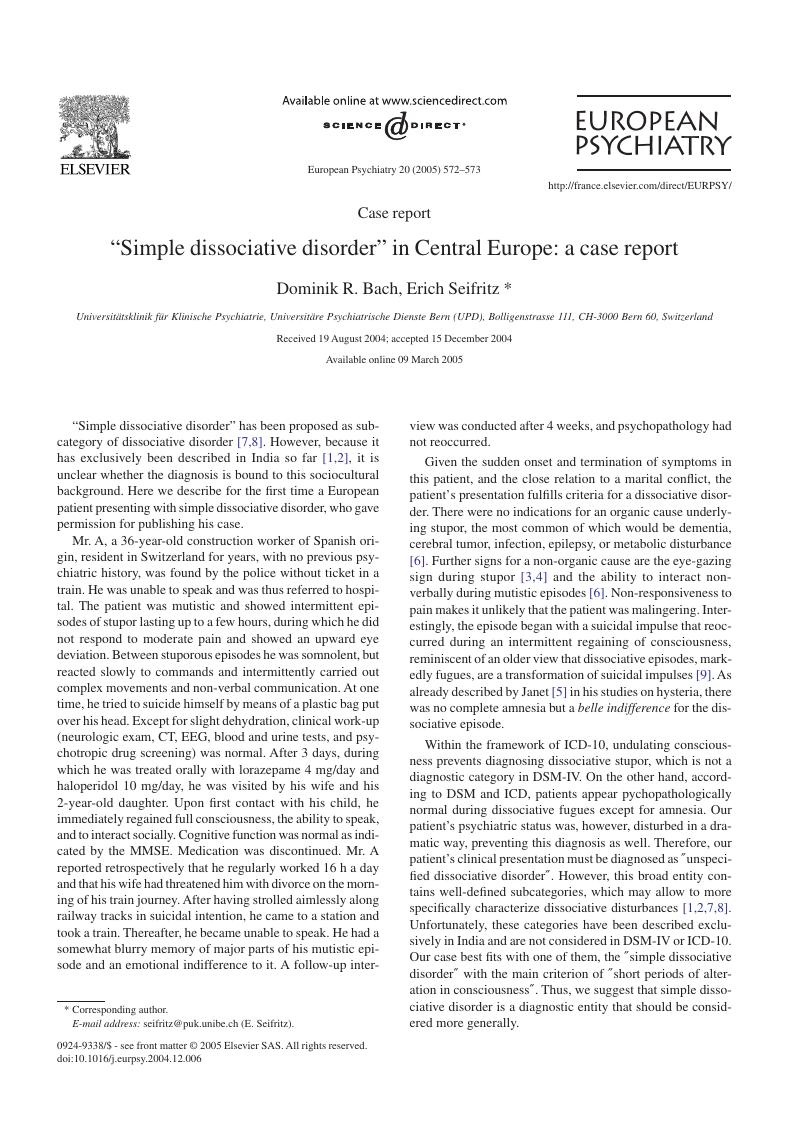No CrossRef data available.
Article contents
“Simple dissociative disorder” in Central Europe: a case report
Published online by Cambridge University Press: 16 April 2020
Abstract
An abstract is not available for this content so a preview has been provided. Please use the Get access link above for information on how to access this content.

- Type
- Case Reports
- Information
- Copyright
- Copyright © Elsevier SAS 2005
References
Alexander, PJJoseph, SDas, ALimited utility of ICD-10 and DSM-IV classification of dissociative and conversion disorders in India. Acta Psychiatr Scand 1997;95:177–182.10.1111/j.1600-0447.1997.tb09617.xCrossRefGoogle ScholarPubMed
Das, ASaxena, SClassification of dissociative states in DSM-III-R and ICD-10. Br J Psychiatry 1991;159:425–427.10.1192/bjp.159.3.425CrossRefGoogle ScholarPubMed
Dhadphale, MEye gaze diagnostic sign in hysterical stupor. Lancet 1980;8190:374–375.10.1016/S0140-6736(80)90377-3CrossRefGoogle Scholar
Henry, JAWoodruff, GHAA diagnostic sign in states of apparent unconsciousness. Lancet 1978;8096:920–921.10.1016/S0140-6736(78)91633-1CrossRefGoogle Scholar
Janet, PThe major symptoms of hysteria. New York: MacMillan; 1907.10.1037/10008-000CrossRefGoogle Scholar
Saxena, S“Simple dissociative disorder”: a subcategory in DSM-III-R?. Am J Psychiatry 1987;144: 524–525.10.1176/ajp.144.4.524-bCrossRefGoogle ScholarPubMed
Saxena, SPrasad, K.V.S.R.DSM-III subclassification of dissociative disorder applied to psychiatric outpatients in India. Am J Psychiatry 1989;146: 261–262.Google ScholarPubMed
Stengel, EFurther studies on pathological wandering (Fugues with the impulse to wander). J Ment Sci 1943;89: 224–241.10.1192/bjp.89.375.224CrossRefGoogle Scholar



Comments
No Comments have been published for this article.